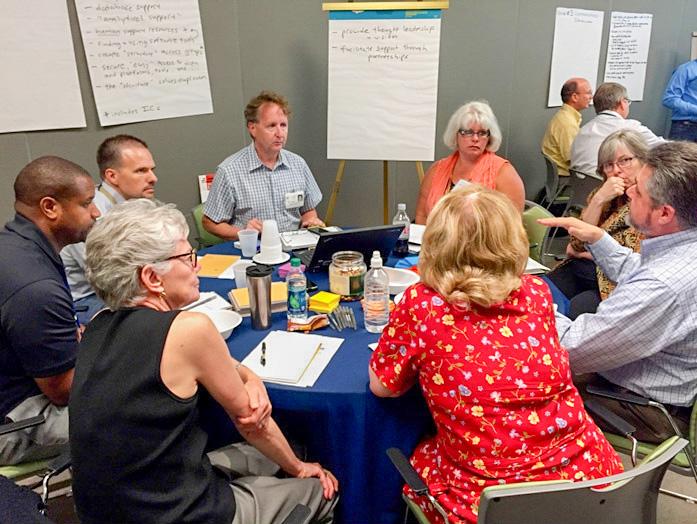As part of NCI’s Research IT Strategic Planning efforts, a workshop was held on the NIH main campus in June. The main purpose of the workshop was to discuss ways to better integrate IT and informatics throughout NCI, and develop specific, high-level goals and related objectives that will drive the direction of IT and informatics support over the next five years.
The initiative to integrate NCI’s IT and informatics is a collaboration between the Center for Biomedical Informatics and Information Technology (CBIIT), Office of Scientific Operations, Data Management Services, and the IT Operations Group.
This approach to strategic planning is an agile development strategy made up of three phases. In the first phase, a life science informatics and bio-IT consulting service, BioTeam, Inc., conducted an overall assessment of NCI’s scientific computing environment. In the second phase (the workshop), NCI staff members developed institute-wide IT strategic goals and objectives. The third phase will be the development of NCI’s implementation plans that act on the goals and objectives in the strategic plan developed by workshop participants.
It was essential to focus the strategic plan and workshop on IT operations across all of NCI since NCI staff members are located both on and off the NIH campus. Staff members from a variety of divisions, offices, and centers within NCI were deliberately selected to ensure that a wide range of ideas were presented.
“It was great to see the representation of employees from across NCI working together to develop the NCI informatics/IT strategic plan,” said Everett Carpenter, IT specialist, NCI Division of Cancer Control and Population Sciences.
Workshop: Three Goals, Six Working Groups
Of the 39 workshop participants, approximately 47 percent were scientists, 37 percent were members of leadership, and 16 percent were IT staff. The workshop had three goals, and from those goals, six working groups were formed to focus on a specific area within each of the three identified goals. Each group fleshed out strengths and areas for improvement, and developed one specific idea aimed at achieving the goal they were assigned.
The three goals focused on service delivery, infrastructure, and informatics.
Service delivery entails the planning, delivery, operation, and control of the services offered to customers. One working group assigned to this goal discussed how to capitalize on, and improve, existing communications capabilities, and/or adopt new methods for facilitating scientific collaboration, research, and the effective exchange of information. This group specifically addressed improving communication between IT and the scientific collaborators across the NCI. The second working group focused on how to deliver customer-focused IT solutions driven by the scientific mission.
IT infrastructure refers to the composite hardware, software, and network resources and services required for the existence, operation, and management of an enterprise IT environment. These resources allow an organization to deliver IT solutions and services to its employees, partners, and/or customers, and they are usually internal to an organization and deployed within owned facilities. The first working group discussed the plan, design, and implementation of IT infrastructure in a timely fashion, utilizing ongoing input from users and use cases, and how to harmonize infrastructure across NCI and NIH. The second working group aimed to develop a robust and accessible infrastructure that provides a seamless service to NCI programs.
Informatics is an interdisciplinary field of science that combines computer science, statistics, mathematics, and engineering to study and process biological data. The first working group aimed to build a community of users to ensure an effective and efficient knowledge transfer through a structure that enables easy access to data and resources. The other group developed an iterative scientific computing culture that supports integration, sharing, collaboration, and communication between intramural and extramural researchers.
The strategic planning goals identified by the working groups are expected to be reviewed and finalized by August 20.
The long-range strategic plan will be implemented across NCI over the next five years in an effort to closely align NCI services with the NCI scientific community and consumers, and to proactively address cost-efficient infrastructure and service. CBIIT Director Warren Kibbe, Ph.D., said, “As we build these partnerships and consider NCI as a whole, we can begin to integrate IT and informatics in a more effective way.”
Greg Warth is the director, IT Operations Group, Leidos Biomedical Research.


